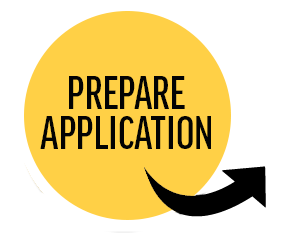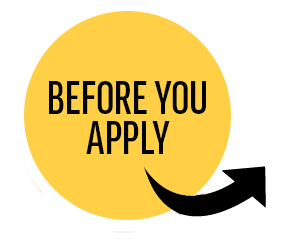School of Ocean Science and Engineering
Applying to Graduate Study in Coastal Sciences
Page Content
Thank you for your interest in the graduate programs of the Division of Coastal Sciences!
Here you will be equipped to help better protect, manage, and enhance coastal and
marine resources. Current research programs support graduate students in investigations
related to aquaculture, aquatic health sciences, coastal ecology, ecosystem processes,
fisheries, fisheries oceanography, and coastal and ocean governance.
Much of our success depends on the scholarly efforts of our graduate students and we seek highly motivated and talented M.S. and Ph.D. candidates with diverse backgrounds and experiences to join our program. Should you have any questions, please contact coastal.sciencesFREEMississippi for more information.
Steps-At-A-Glance
|
Review Information |
|
Identify Faculty Sponsor |

|
|
Review Application |
|
Identify References |

|
Fill Online |
|
Get Transcripts |
Before You Apply
Review Information on COA Program
Before applying to the graduate program, you should first determine if USM and COA is the right place for you. We encourage you to spend some time researching the COA website and faculty web pages to get a feel for research programs, facilities, and other available university resources. Think about why you want a M.S. or Ph.D. degree in Coastal Sciences, and how getting that degree from COA will help you reach your career goals.
Identify Faculty Sponsor and Discuss Funding Opportunities
Importantly, COA requires that each student accepted into the program have a faculty sponsor. A faculty sponsor is a member of the COA faculty who is willing to serve as the student's major professor and provides funds for an assistantship and resources to perform the student’s research. This is one of the most important decisions a student will make, as the faculty sponsor will be their primary mentor throughout their graduate program. Students are required to identify a faculty sponsor before applying for admission.
To find a faculty sponsor, prospective students should consult the Coastal Sciences Faculty Directory to identify and contact a faculty member with whom they might have a common interest. It is often best to reach out to a faculty member via email, with a brief letter of introduction. Faculty members will want to set up an interview with a prospectus student to discuss their interests and potential thesis or dissertation ideas.
Nearly all COA graduate students are supported by external grants awarded to COA faculty.
These grants provide funds for student stipends, tuition, and research needs. In addition
to a strong application, a faculty member’s willingness and ability to accept a new
student will often depend on the availability of funding. Additional funding opportunities
include the COA Graduate Fellowship, and external sources, such as the National Science
Foundation’s Graduate Research Fellowship Program (GRFP). Applicants are encouraged to discuss funding needs with their prospective mentor.
Prepare Application
Materials
Once you have decided that COA is the right path for you, and have communicated with a potential faculty sponsor, then you are ready to officially apply to the COA graduate program. Find the instructions.
Application materials will include the following:
- Statement of purpose
- Resume
- University transcripts
- Three letters of recommendation: Identify references and contact them to discuss application.
For the M.S. program, a GPA of at least 3.0 on all undergraduate coursework is required.
For the Ph.D. program, a GPA of at least 3.5 on all graduate coursework (if entering with a M.S. degree) or a GPA of at least 3.5 on all undergraduate coursework (if entering with a bachelor's degree) is required.
Please note that these GPA criteria are higher than the minimum standards for regular
admission as set forth by the USM Graduate School. Applicants with a GPA below the
standards above have potential to receive conditional admission. However, students
granted conditional admission to the COA graduate program are not eligible for any
graduate assistantship positions regardless of the source of funding.
Evaluation Criteria: How We Evaluate Graduate Applications
Admission is competitive and based on the COA faculty's evaluation of the entire graduate application. Strong letters of recommendation often weigh heavily, particularly those from undergraduate research mentors, academic advisors, and instructors. Each faculty member brings their own unique perspective to the evaluation, but often include some of the following considerations, among others:
- Does the academic record include relevant coursework and the level of achievement required to pursue graduate level research in the chosen discipline?
- Is there a positive trajectory in the applicant’s scholarly record and research interests?
- Is there evidence that the applicant can work well both independently and as part of a team?
- Has the applicant sought out and taken advantage of available research opportunities?
- Is the statement of purpose written in a clear and organized manner?
- Has the applicant demonstrated perseverance or adaptability in the face of academic or other life challenges?
After careful review of each application, the COA faculty votes as to whether applicants
are admitted into the program.
Submit Application
Getting Started with the Application
Once you select from the application category that applies to you, create an account or sign in to the application portal. It's simple, get started today!
How do I get my Transcripts Sent to USM?
For a university to receive your official college transcripts, you’ll need to contact your old institution’s Registrar’s Office. (This might be called the “Records Office” at some institutions.) The Registrar’s Office will send your transcripts directly from their office to the admissions office of the university you’re hoping to attend. They can send your transcripts through Electronic Delivery (Email), FedEx/UPS, or U.S. Mail. Getting your transcripts emailed to the university you’re applying to is the fastest, easiest method!
Note: Most universities do charge a small fee for sending your official transcripts to other institutions.
Additional Resources
The statement of purpose is a critical part of the application, and often the faculty's
"first impression" of a potential candidate. There are many guides on the web that
provide valuable tips on how to write an impactful statement of purpose; here are
a few:
How to Write a Statement of Purpose for Graduate School
Writing the Statement of Purpose
Writing Your Statement of Purpose
In addition to contacting faculty, it is often helpful to reach out to current COA graduate students to get their opinions about the program. These students are where you hope to be some day, and they can provide first hand information on what its like to work, learn, and succeed in our program.
- Identify faculty sponsor and obtain agreement to serve as major professor and provide funding for research
- Determine source of funding for assistantship in discussion with faculty sponsor (assistantship sponsored by faculty member or application to COA fellowship)
- Identify references and contact them to discuss application;
- Review application evaluation criteria
- Prepare application material (Resume and narrative)
- Fill online application and submit
- Get undergraduate/graduate transcripts sent to USM
- Follow-up with references to make sure letters are submitted
